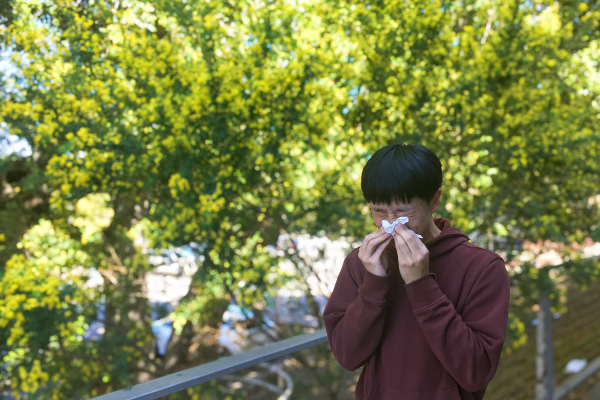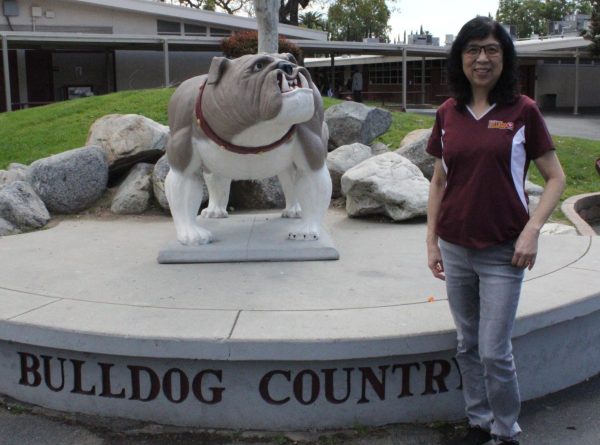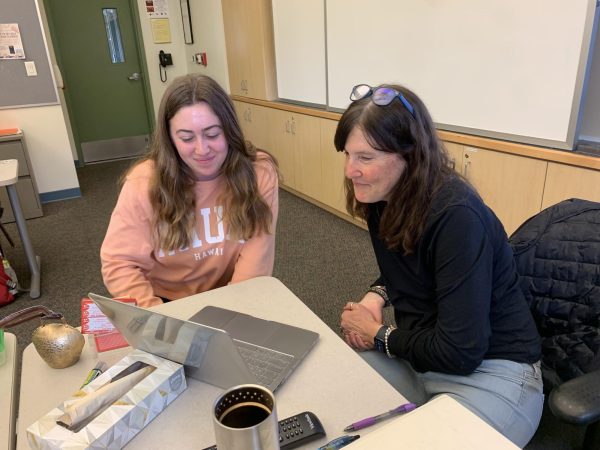Students stay connected to their faith amidst uncertainty
As the COVID-19 pandemic affects in-person worship services, students find alternative ways to practice their religions and celebrate holidays.
September 17, 2020
When statewide stay-at-home orders went into effect and new health guidelines were issued, many businesses and restaurants felt the burden of having to close operations to maintain the spread of the novel coronavirus. But churches also felt the blow of having to close down in-person services and stay connected as a community, but at a distance.
Junior Joceline Perez has maintained her connection to her Catholic faith but admits that it still isn’t the same connection that she usually feels to her church community.
“Being Catholic and having the obligation of attending mass on Sunday, social distancing prevents us from giving a sign of peace or even receiving the home sacrament in our mouths,” said Perez. On virtual services, she adds, “Online activities can be difficult to stay on top of with everything else going on in my life.”
For many people, their religion is a large part of their identity, and weekly worship services are an important way for them to stay rooted firmly in their faith.
In order to stay connected to church communities during times of physical isolation, many religious services have moved to a virtual format, giving people a way to hold onto communities that give them hope.
Senior Alleigha Bos is a member of the Church of Jesus Christ of Latter Day Saints and despite the pandemic, has found that her faith has given her comfort and kept her grounded during this time.
“I think personally having beliefs and an idea of why things are happening is overall very comforting,” said Bos. “I think religion is definitely one of the biggest things in my life and when everything goes wrong that’s where I turn.”
As time has progressed and experts have learned more about the novel coronavirus, some places of worship have been able to reopen for in-person services with specific guidelines set by health officials. This switch has been met with mixed reviews; some people are ready to return to in-person services while some are hesitant about the safety of in-person services and would rather stay virtual.
Junior Ruth-Mary Shackleford has been attending church services online since the onset of the pandemic, but recently, her church has recently resumed in-person services.
“I am disappointed that my church has started to go back in person, although it is limited seating,” said Shackleford. “Religiously, I am learning about how to navigate when a lot of people in my church seem to think differently than me regarding COVID.”
Guidelines set by the California Department of Public Health specify that places of worship must limit attendance to 25% capacity or 100 attendees, whichever is lower, and must continue to offer online worship services. The guidelines also require plans from each place of worship for screening workers and volunteers and disinfecting high-traffic areas.
Religious leaders are encouraged to wear gloves and enforce social distancing in the arrangement of seating. The guidelines also discourage large groups of people singing such as choir performances or other celebrations.
The statewide order for face coverings also applies, and the guidelines discourage sharing of any worship materials, including books and prayer rugs. Items that have to be shared, such as microphones, should be sanitized often and between uses.
Outside of regular services, places of worship have also had to navigate celebrating major holidays that often involve traditions and celebrations with the whole congregation. The Jewish holiday of Rosh Hashanah is from Sept. 18-20 this year, followed closely by Yom Kippur on Sept. 27-28.
Both of these holiday services have had to be adapted by synagogues in Sacramento and nationwide to accommodate health recommendations. Sophomore Ana Perales and her family are trying to maintain some sense of normalcy when celebrating the holidays despite adverse circumstances.
“We try our hardest to do every holiday and if we can’t we do them at home and watch online streams of our church’s family doing it online and at their homes,” said Perales.
When worship services will return to normal is still unknown due to the unpredictable nature of the virus’ spread, but students and families are making the best of the current situation to stay connected to and grounded in their faith, helping them get through the hard time.
This story was originally published on The Mirada on September 15, 2020.
































![IN THE SPOTLIGHT: Junior Zalie Mann performs “I Love to Cry at Weddings,” an ensemble piece from the fall musical Sweet Charity, to prospective students during the Fine Arts Showcase on Wednesday, Nov. 8. The showcase is a compilation of performances and demonstrations from each fine arts strand offered at McCallum. This show is put on so that prospective students can see if they are interested in joining an academy or major.
Sweet Charity originally ran the weekends of Sept. 28 and Oct. 8, but made a comeback for the Fine Arts Showcase.
“[Being at the front in the spotlight] is my favorite part of the whole dance, so I was super happy to be on stage performing and smiling at the audience,” Mann said.
Mann performed in both the musical theatre performance and dance excerpt “Ethereal,” a contemporary piece choreographed by the new dance director Terrance Carson, in the showcase. With also being a dance ambassador, Mann got to talk about what MAC dance is, her experience and answer any questions the aspiring arts majors and their parents may have.
Caption by Maya Tackett.](https://bestofsno.com/wp-content/uploads/2024/02/53321803427_47cd17fe70_o-1-1200x800.jpg)
![SPREADING THE JOY: Sophomore Chim Becker poses with sophomores Cozbi Sims and Lou Davidson while manning a table at the Hispanic Heritage treat day during lunch of Sept 28. Becker is a part of the students of color alliance, who put together the activity to raise money for their club.
“It [the stand] was really fun because McCallum has a lot of latino kids,” Becker said. “And I think it was nice that I could share the stuff that I usually just have at home with people who have never tried it before.”
Becker recognizes the importance of celebrating Hispanic heritage at Mac.
“I think its important to celebrate,” Becker said. “Because our culture is awesome and super cool, and everybody should be able to learn about other cultures of the world.”
Caption by JoJo Barnard.](https://bestofsno.com/wp-content/uploads/2024/01/53221601352_4127a81c41_o-1200x675.jpg)














